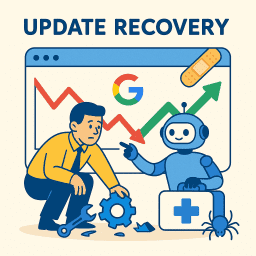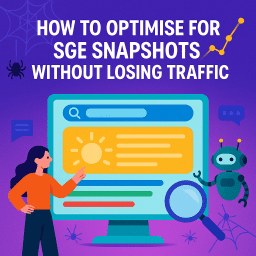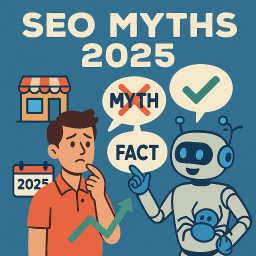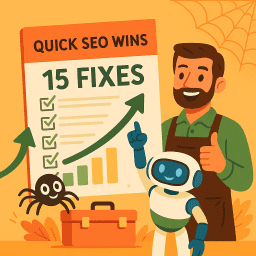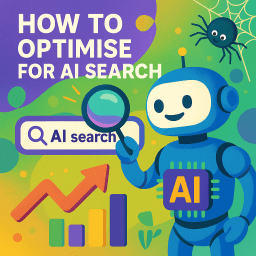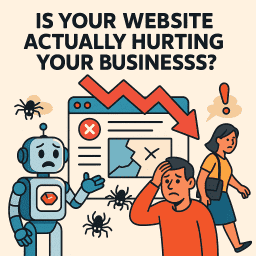SEO for Multilingual Websites: Rank Globally in 2025
A practical guide to global SEO, translation, and structure
🔥 Stop Confusing Google — Start Winning Globally
Reaching a global audience doesn’t just mean translating your content—it means thinking strategically about how your website appears and functions in different languages and regions. Welcome to the world of multilingual SEO. Done right, it opens the door to international traffic and better rankings. Done wrong, it confuses search engines, leads to duplicate content issues, and hurts visibility.
This guide breaks down how to build a multilingual website that performs brilliantly across borders—using hreflang tags, proper localisation, international targeting, and smart technical SEO foundations.
🌍 What Is Multilingual SEO?
Multilingual SEO is the process of optimising your website so that search engines can correctly understand, index, and serve your content to users in multiple languages and countries. It involves far more than just translating text—it requires:
- 🈂️ Managing language-specific URLs
- 📍 Setting country targets
- 🔀 Avoiding duplicate content
- 🔖 Implementing hreflang annotations
🔠 Hreflang Tags: The Cornerstone of Multilingual SEO
Hreflang tags tell Google which version of your content is meant for which audience. They help prevent duplicate content penalties and ensure users are sent to the correct language page.
For example:
<link rel="alternate" hreflang="en" href="https://example.com/en/" />
<link rel="alternate" hreflang="es" href="https://example.com/es/" />
<link rel="alternate" hreflang="x-default" href="https://example.com/" />Make sure every translated page includes hreflang annotations for itself and every other language version—including the default.
🛡️ Avoiding Duplicate Content
Simply duplicating content across domains or language folders—without distinguishing them—can confuse search engines. You must:
- ✔️ Use hreflang to differentiate identical or near-identical content
- ✔️ Avoid using the same URL for multiple languages
- ✔️ Use canonical tags carefully if you republish similar content
🌐 URL Structures: ccTLD vs Subdomain vs Subfolder
There’s more than one way to structure your multilingual site. Each has pros and cons:
- ccTLD (example.fr): Great for country targeting, but expensive and complex.
- Subdomain (fr.example.com): Easier setup, but may not pass link equity as efficiently.
- Subfolder (example.com/fr/): SEO-friendly and easy to manage, often the best balance.
🧭 Language vs Country Targeting
Language targeting (Spanish speakers globally) is different from country targeting (Spanish speakers in Mexico).
Set your goals clearly:
- 🗺️ Use Google Search Console’s International Targeting feature
- 🧩 Translate content based on cultural context, not just language
📝 Localisation: More Than Just Translation
Localisation is about adapting content for culture—not just converting words.
- 💳 Use local currency, date formats, and units
- 📦 Reference local products, services, or customs
- 📈 Optimise for local search terms—“car hire” vs “car rental”
⚙️ Technical Must-Haves for Multilingual SEO
- ✅ Use UTF-8 encoding
- ✅ Set HTML
langattributes correctly - ✅ Ensure mobile responsiveness across all language versions
- ✅ Make navigation easy between languages
🔍 Tracking & Performance
To monitor how well your international pages are doing, use:
- 📊 Google Search Console (performance per country/language)
- 🌐 Google Analytics (user language and region segmentation)
🌐 WordPress Language Plugins That Simplify Multilingual SEO
Using the right language plugin for your WordPress website can make multilingual SEO far more manageable. These plugins help you translate your site, manage hreflang tags, and avoid duplicate content issues across languages.
- Polylang: One of the most popular multilingual plugins, Polylang allows you to translate your site into as many languages as needed. It automatically adds hreflang tags and supports separate URLs or subdomains per language.
- WPML (WordPress Multilingual Plugin): A powerful premium plugin that supports content translation, string translation, multilingual SEO, and WooCommerce integration. Ideal for larger or more complex websites.
- TranslatePress: A visual, front-end translation plugin that works directly on the page. Great for users who want to see what they’re translating in real time. Also supports SEO-friendly URLs for each language.
- GTranslate: Uses Google Translate to offer automatic translation of your website. While it’s quick and easy, it may not be suitable for businesses that require high-quality, manual translations.
- Weglot: A premium plugin that automatically detects and translates content, offering a professional interface to manage translations. It’s fully SEO-compatible and easy to implement.
When choosing a plugin, always consider your site’s scale, your translation needs, and whether SEO elements like hreflang, metadata, and permalinks are supported.
💡 Final Takeaways
- 🌐 Use hreflang to guide search engines and avoid confusion
- 📁 Structure your URLs thoughtfully
- 🧠 Localise, don’t just translate
- ⚙️ Get the technical details right
- 📈 Monitor performance and adapt
“SEO isn’t just about words—it’s about meaning, culture, and clarity. If your site can speak someone’s language, it can earn their trust.”
— David Roche
📝 Multilingual SEO FAQs
What is multilingual SEO in 2025?
It’s the process of optimising every language version of your site—URLs, hreflang tags, on-page text, and metadata—so search engines can index and serve the right page to the right audience worldwide.
Do I just translate, or fully localise my content?
Localise. Adapt currency, date formats, cultural references, and keywords (“car hire” vs “car rental”) so the content feels native to each market—not merely translated.
Which URL structure is best—ccTLD, subdomain, or subfolder?
A subfolder (example.com/fr/) usually offers the best balance of SEO equity and ease of management, but ccTLDs are strongest for country-specific branding, and subdomains are a workable middle ground.
How do hreflang tags help my rankings?
Hreflang annotations tell Google and Bing which language-country page to show and stop duplicate-content confusion—so each audience lands on the correct version automatically.
Language targeting vs country targeting—what’s the difference?
Language targeting serves all speakers of a language globally, while country targeting (set in Search Console or via ccTLDs) tailors content and SERP visibility to one specific nation.
How can I avoid duplicate-content penalties on a multilingual site?
Use unique URLs for every language, apply hreflang on every page pair, and set canonicals only when absolutely necessary.
Which WordPress plugins make multilingual SEO easier?
Popular options include Polylang, WPML, TranslatePress, Weglot, and GTranslate—each adds language switchers, SEO-friendly URLs, and automatic hreflang generation.
How do I track international performance?
Check Google Search Console’s International Targeting and Performance reports plus GA4’s language & region segments for clicks, impressions, and conversions per locale.
Will machine-translated pages hurt my SEO?
Poor-quality automatic translations can lower quality signals. If you use AI or plugin auto-translate, always review and improve the output—or hire native translators—before publishing.
What technical basics must every multilingual site have?
Correct HTML lang attributes and UTF-8 encoding, responsive design across all locales, fast page speed, and clear navigation between language versions.





